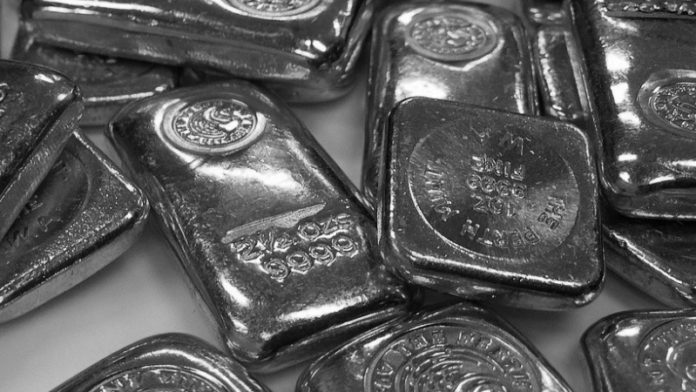
AFTER 10 years in the doldrums, South African platinum stocks finally sprang back to life from the end of 2018 in response to increases in the prices of palladium and rhodium which – combined with the impact of a depreciating rand – were sufficient to put nearly all South African platinum miners back into the black.
That’s despite the industry’s output being dominated by platinum which is still suffering from a heavily depressed price leading to a situation where the country’s miners now refer to themselves as PGM (platinum group metals) producers instead of platinum miners.
The impact has been dramatic with Impala Platinum (Implats) shares more than trebling from around R17 in August last year to hit a 12-month high of R69,35 in March while Anglo American Platinum (AngloPlat) shares more than doubled over the same period from around R411 to a 12 month high of R845.
So the $64,000 question is this … do we finally have lift-off on a sustainable recovery for the South African platinum sector?
Yes, says Noah Capital analyst, René Hochreiter who comments: “The outlook for PGM miners is better than it has been for many years. The whole PGM market is going into massive deficit – 10 baggers (companies which see their share price go up 10 times) will come”.
No, says Stephen Forrest, executive chairman of SFA Oxford, who reckons the outlook may be better, but he does not think it is sustainable and he remains particularly negative over platinum’s prospects stressing that the metal remains in heavy oversupply.
The outlook for PGM miners is better than it has been for many years. The whole PGM market is going into massive deficit – 10 baggers
Speaking at the PGM Industry Day conference held recently in Johannesburg Forrest commented: “Whether you call yourself a platinum miner or a PGM miner, it’s all semantics and you cannot kid yourself here. Future demand does not favour the South African PGM production mix right now.
“Looking out five to ten years the South African mines’ output will consist of about 58% platinum, 34% palladium, and 8% rhodium. The demand mix over this period is for between 50% to 60% palladium, but only about 40% platinum and about 6% rhodium.”
MARKETING
So analyst opinion is split down the middle – nothing unusual there – and South African platinum company executives remain optimistic which is also to be expected.
According to Anglo American Platinum CEO, Chris Griffith, around 65% of the South African platinum industry was loss-making in 2017, but the increase in the prices of rhodium and palladium over the past year had brought all the mines back into the black.
But there remains obvious concern over the impact of continuing oversupply of platinum to the market despite the cutbacks that have taken place so far in South Africa through project delays and shaft closures.
That was what underpinned the plea from Griffith in his presentation to the Platinum Group Metals Industry Day conference in April to platinum producers to invest in growing market demand rather than going for new projects.
He commented: “We will make far more money through investing in demand than by investing in new supply. My message to miners is to invest in demand first and we will make incredible amounts of money as that demand comes and then supply will catch up.”
Griffith highlighted declining jewellery sales in the Chinese market as the number one priority stating: “We simply cannot allow the platinum jewellery market in China to continue losing between 100,000 ounces and 200,000 oz of platinum annually which is equivalent to a medium-sized platinum mine.”
Forrest was even more pointed asking why the drop in the platinum price had not stimulated jewellery demand growth.
“I am concerned about the brand damage to platinum. The metal has been trading at up to a $600/oz discount to gold and still there’s no buying. There’s no love in the room and we need to understand why.”
ELECTRIC FUTURE
The other bone of contention is the impact of the move to electric vehicles on PGM demand and, more specifically, the impact on platinum of the dominance of palladium being used as autocatalyst to clean up petrol vehicle emissions.
In the past, car manufacturers have switched between platinum and palladium in autocatalyst in response to major price differences between the two metals.
That does not appear to have happened so far this time around even though platinum has slumped to levels around $800/oz while palladium has surged to highs around $1,400/oz.
Forrest says he has not found any evidence to suggest there will be a meaningful substitution and comments: “I am not saying no, but I don’t see it in the next two years.”
He cites manufacturer technical concerns over failing to meet the new emission standards coming into force in Europe by 2021 and, as a consequence, being hit by “unbelievable” fines.
Forrest is backed up by precious metals refiner, Heraeus, which commented that substitution in place of palladium is not likely in the short-term due to “… the risk of failing stricter emissions tests.”
That’s rejected by Hochreiter who comments: “Switching from palladium to platinum has started but OEM’s (original equipment manufacturers) are doing their best to cover this up because they are panicking on metal supply. Platinum does not need more than three months to be passed for certification to substitute for palladium.”
Forrest reckons that the outlook for the dollar PGM basket price is flat while the platinum market is oversupplied and concludes: “I don’t believe the bear market in platinum is over.”
Hochreiter fires back rejecting the forecast of a flat outlook for the basket price pointing out that the PGMs are in deficit; new platinum mines are unlikely to come into production before 2025 while old shafts will be closed down over the next five years and market development will spur demand.











